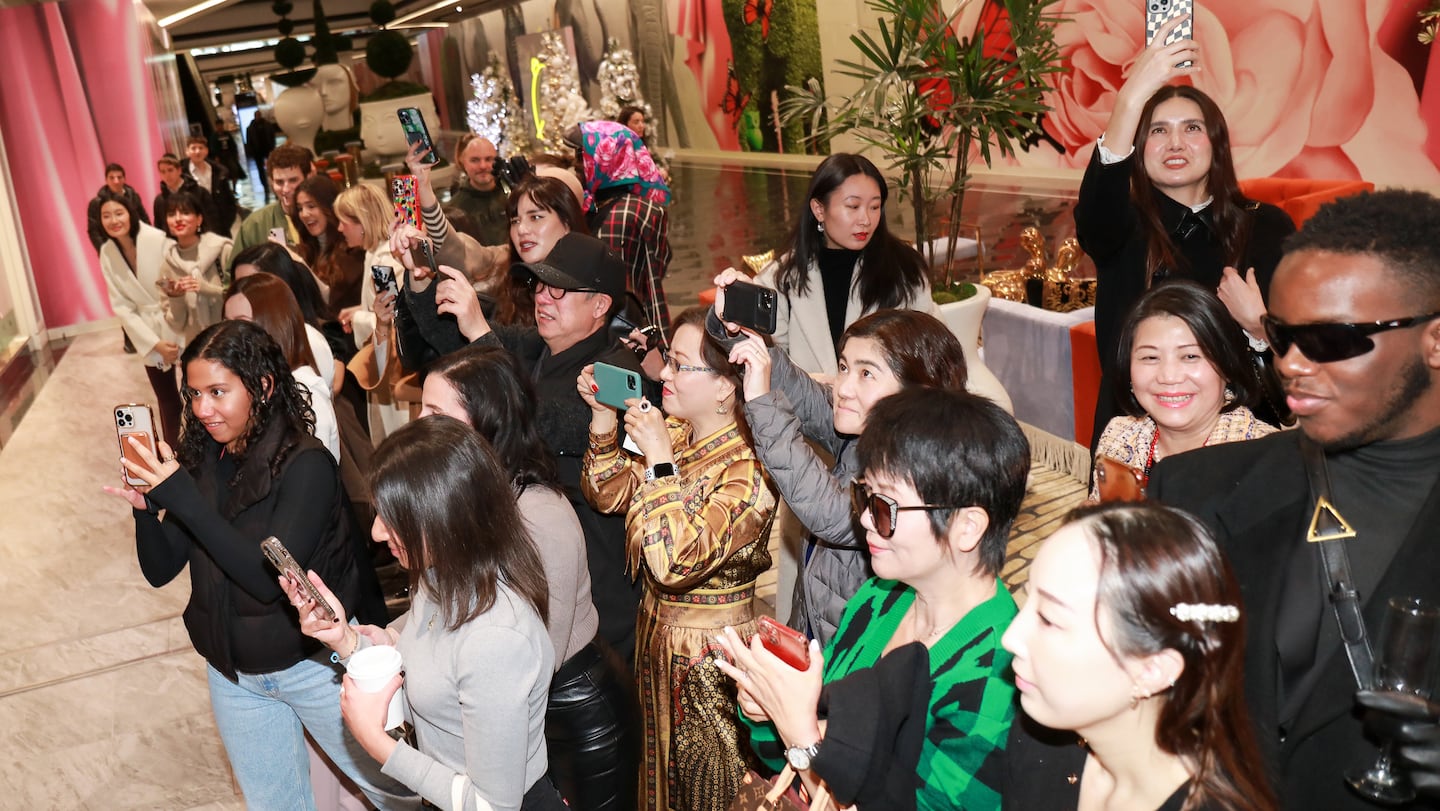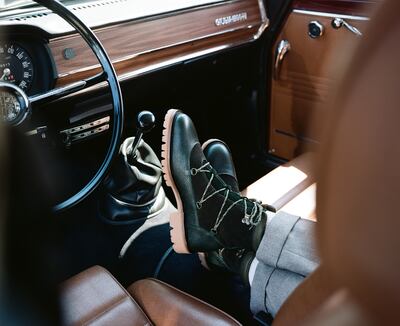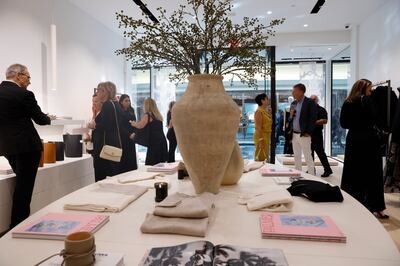
The Business of Fashion
Agenda-setting intelligence, analysis and advice for the global fashion community.

Agenda-setting intelligence, analysis and advice for the global fashion community.

Swiss shoemaker Daniel Bucheli opened his first store in the US last year knowing it would take months — if not years — to establish his brand there.
It’s not that his decade-old, Zurich-based label, Le Majordome, isn’t cool. In addition to selling traditional monk strap oxfords and two-tone galosh boots, the brand will create custom shoes in practically any style customers can dream up. Past designs include a loafer in a rainbow-coloured patina and oxfords in New York Taxi yellow.
But Bucheli didn’t have funding to blast ads on social media or subway trains, and even if he did, pinpointing the right audience for personalised shoes would be difficult in an unfamiliar market.
So Le Majordome has taken a scrappier approach: tell as many people about its services as possible, and rely on word of mouth to do the rest. After setting up shop in Midtown last fall, Bucheli and his associates visited their retail neighbours nearby, introducing themselves to the store employees and encouraging them to refer their customers to Le Majordome if they ask about shoes. Le Majordome also hosts small happy hour events, inviting the retailers on the block for drinks and snacks.
ADVERTISEMENT
It’s a little bit of a “guerilla” tactic, Bucheli said, “but it definitely helps with brand recognition.”

For young, independent brands like Le Majordome, such unconventional methods are not just a creative way to find customers but a means of survival. Advertising on social media is more expensive than ever, while shoppers are inundated with choice in every product category. A looming economic downturn favours established incumbents over newcomers.
So rather than casting a wide net, the savviest underdogs, whether they’re a tiny brand just starting out or a big one branching out into a new market, opt for smaller-scale and often local activations to reach their initial customers. From pizza parties and professional conferences to specialty stores, niche Substacks and trunk shows, today’s upstarts have found new imaginative ways to reach their customer, embracing a form of marketing often neglected by their VC-funded, direct-to-consumer predecessors — word of mouth.
“Performance marketing will come in down the road once we hone in on who the customer is,” said Louise Denny, who recently launched womenswear brand Rose Room alongside her partner, Ally Lewis, by hosting a series of trunk shows in the New York City area. “To us, there’s nothing more valuable than seeing who they are in real life.”
Chinese womenswear label Ep Yaying entered the US market this year with a solid plan of infiltration. To command its luxury-adjacent prices, Ep Yaying targets successful working women in fields like law, medicine and business, ages 30 to 50, and typically Chinese or Asian.
To find them, Ep Yaying is going exactly where they congregate: professional organisations, social clubs and industry conferences. First, the company joined the China General Chamber of Commerce, a nonprofit organisation spearheaded by the Bank of China to promote Chinese companies in the US.
Ep Yaying also joined Mulan Club, a New York City-based networking organisation for Asian women, and worked with Chinese media network CGTN, China’s English-language news channel.
The idea is to meet other members of these groups, according to Joe Ye, the brand’s president of the US market, and introduce them to Ep Yaying. From there, hopefully they’ll spread the word to their friends. Eventually, the company plans to host events within these groups as well.
ADVERTISEMENT
Ep Yaying will pursue this networking strategy alongside more traditional channels of growth, including opening stores and expanding into wholesale, Ye said. The brand recently opened its first US location in the American Dream mall in East Rutherford, New Jersey.
Rose Room’s Denny and Lewis, too, plan their trunk shows based on their connections with friends and associates, who host these events at their homes.
The idea is for a trunk show to feel more like a cocktail party than a shopping session, Denny said. While women can purchase pieces at the trunk show, “it’s a moment for brand awareness,” she added.
Rose Room plans on hosting travelling trunk shows in the coming months, visiting cities like San Francisco, Charlotte, Houston and Atlanta — cities that aren’t as saturated with fashion options like New York or Los Angeles, Lewis said.
In many instances, smaller events result in higher conversions. Le Majordome has seen success partnering with local tailors rather than well-known brands. Independent tailors tend to have very loyal customers, and offer similar made-to-measure services as Le Majordome.
“We had people tell us, ‘You need to do collaborations with this really cool brand,’ but we don’t have anything in common with them,” Bucheli said. “That’s the theme — know your customer … With tailors, the cross section can be 100 percent. Their [patrons] appreciate custom, and they have the money to spend on it.’
Bucheli was equally judicious about the location of Le Majordome’s first American outpost.
“I must’ve looked at 50 different stores,” he said.
ADVERTISEMENT
At one point, he considered Nolita — home to streetwear favourite Aime Leon Dore.
“It’s a cool spot, but is it really our customer?” Bucheli added. “What we did in the end was check where similar brands were, and where we think our customers shop, and that was Midtown.”
Not the sexiest of locations, but Midtown has proven to be the right call. Le Majordome catches affluent corporate commuters on their way in and out of the office. Within a year, the store was fully profitable.
Brick-and-mortar can also serve as a point of discovery for budding brands or those looking to reposition itself in the market.
Contemporary womenswear label Lafayette 148, for instance, revamped its supply chain during the pandemic to become a proper luxury brand and increased prices by about 30 percent.
But a new price tag means having to find new customers, and brick-and-mortar has been key.
In the last 18 months, the brand opened 10 new stores around the country — up from nine in 2020. It signed on new wholesale accounts with a more luxury-oriented customer, such as Mitchell’s in Greenwich, Conn.
“That’s a lot for us but we want to go where our customer is,” said Deirdre Quinn, the brand’s co-founder and chief executive.

Being part of a multi-brand experience is a great way to reach customers who are looking for something new, according to Melissa Seligmann, chief operating officer of Thingtesting, a review platform for e-commerce brands.
Seligmann points to stores like Showfields, a retail chain that showcases dozens of small brands in an experiential setting. Neighborhood Goods, a self-proclaimed “department store” for new brands, is another example of curated multi-brand retail.
Sometimes the most effective channels can be surprising. Le Majordome tapped a public relations firm to promote its launch last year and has received writeups in several publications, including High Snobiety and Bloomberg Businessweek.
While High Snobiety momentarily lent the brand an air of cool, it was Bloomberg that resulted in a spike in sales.
“Maybe High Snobiety is the Nolita of magazines, whereas Businessweek is more defined by Midtown, and you realise that’s who it is, that’s our customer,” Bucheli said.
Once a brand identifies its audience, it should go after that demographic with precision, said Seligmann. Small, niche media publications tend to drive higher conversion rates. Seligmann points to the fashion Substack newsletter, Blackbird Spyplane, where she has already discovered two brands that she intends to shop.
Ultimately, a good product will speak for itself.
“The most important ambassadors are always going to be your customers,” Bucheli said. “They know you’re the underdog, and they’ll tell their friends.”
In a saturated market where customer acquisition costs are on the rise, fashion and beauty start-ups are exploring ways to boost repeat business.
Millions of consumers — particularly older ones — say they may not shop in stores until there’s a coronavirus vaccine. Many aren't big fans of e-commerce, either. Here’s how to keep them spending.
Frustrated by the rising costs of ads and declining reach, some fashion brands are re-allocating their marketing budgets.

Cathaleen Chen is Retail Correspondent at The Business of Fashion. She is based in New York and drives BoF’s coverage of the retail and direct-to-consumer sectors.
As the German sportswear giant taps surging demand for its Samba and Gazelle sneakers, it’s also taking steps to spread its bets ahead of peak interest.
A profitable, multi-trillion dollar fashion industry populated with brands that generate minimal economic and environmental waste is within our reach, argues Lawrence Lenihan.
RFID technology has made self-checkout far more efficient than traditional scanning kiosks at retailers like Zara and Uniqlo, but the industry at large hesitates to fully embrace the innovation over concerns of theft and customer engagement.
The company has continued to struggle with growing “at scale” and issued a warning in February that revenue may not start increasing again until the fourth quarter.